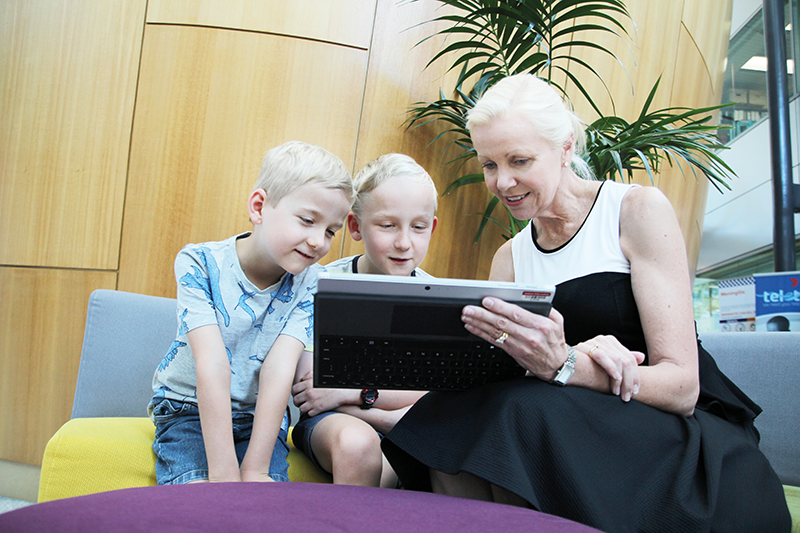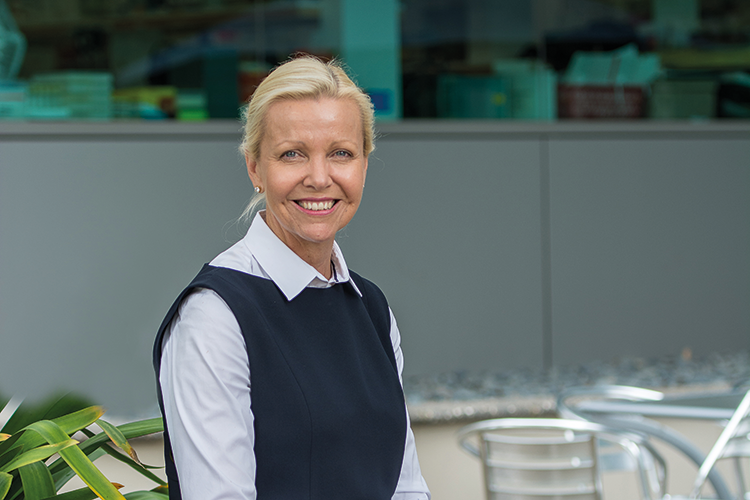
Schools from around the globe – with significant differences in languages spoken, uniforms worn and even lunchbox contents – have turned to The Kids Research Institute Australia, seeking access to invaluable lessons learned from Australian students on how to effectively reduce harm from cyberbullying.
There has been huge interest over the past year in the Institute’s Friendly Schools Plus program – a set of comprehensive, evidence-based resources found to reduce bullying behaviour – with schools or school-focused groups in Denmark, Norway and New Zealand recently picking it up.
They join schools in the USA, United Kingdom, Singapore and South Africa, along with 3,000 local Australian schools already using the effective whole-school approach developed by Professor Donna Cross and her team.
The program, which supports not only those being bullied or cyberbullied but the students who are doing the bullying and bystanders as well, is based on evidence gained in 11 trials involving 30,000 Australian students, carried out over 20 years with research partners at Curtin University and the Child Health Promotion Research Centre at Edith Cowan University.
The program’s powerful reach means Professor Cross often finds herself on an overseas phone call or a plane, having been appointed to advisory boards or having entered formal international agreements with educational institutes and research partnerships with universities. She is currently a member of Denmark’s Princess Mary Foundation expert panel guiding the implementation of anti-bullying strategies.
“There has been tremendous interest and many schools in these countries either want to replicate our programs or take on the resources, adapting and translating them for their own use,” Professor Cross said.
She said the Institute had been among the first in the world to do the most rigorous work in bullying prevention, carrying out its first randomised control trial in 1999.
“And then, as behaviours changed, with cyberbullying we were the first to lead a trial investigating student-developed interventions – a randomised control trial called the Cyber Friendly Schools program,” she said.
“Our work has been dynamic, relying on young people’s input into the issue and their ideas to address each new development.
“The component the overseas groups are now most interested in is our Cyber Friendly Schools research. They want to adapt, use and test our tools and resources with the young people in their country.”
Professor Cross said bullying and cyberbullying trends among children and teens were similar around the world, with a common shift from overt to covert bullying, similar levels of prevalence, and behaviour peaking at around 10 to 11 years-old.
In secondary school, however, differences emerged in the online environment. Young people in Germany, for example were shown to be more likely to bully in chat sites, young Australians were more likely to do so via social networks, and in parts of Asia such as South Korea, gaming sites were the more common venue for bullying.
“Some of the overseas groups have taken on our program based on the Australian findings,” Professor Cross said. “Others, such as Norway and a group in Denmark and New Zealand, are keen to formally test it in their environment whilst implementing it, to ensure it is having similar effects to those that we have found.
“Given our resources here in Australia were co-developed by young people of a similar age group as those using them, we have encouraged each of these countries to engage locally with their young cyber leaders to critically review our Australian resources and adapt them to suit their unique needs.
“These countries have really liked the formative process that we used and they have tried to replicate the ways we engaged with young people – so much so that the cyber leader resources we developed are freely available online so they can replicate our methodology.
“Even at the individual school level, cyber leaders can be engaged to help promote positive and proactive cyber behaviour. It’s much better than waiting until an incident occurs and being on the back foot.”
Cyber leaders can benefit the whole school community by facilitating educational opportunities for the full range of stakeholders within the school, including other students, teachers and other school staff, and parents.
What's next
- Researchers urge each school to appoint a Cyber Leader Group. These cyber leaders receive training and resources to support them to act as positive role models and advocate, encourage and inspire good digital and online behaviour.
- The team is seeking funding to develop new strategies identified by the Institute’s young Cyber Savvy ambassadors as having the potential to help parents better understand the online environment, and create positive relationships around cyber behaviour.
- Researchers are helping teachers and others who work with young people to safely use social media as a teaching aid to engage with young people, through the further development of Cyber Strong Schools program tools.
- The team is helping parents of very young children use digital technology more effectively, by developing an online system using machine learning that will provide guidance and reminders, tailor appropriate responses and identify and mitigate potential risks.
Cyber safety can learn lessons from swimming pool safety
Rather than just banning and blocking, Professor Cross said it was vital parents created an on-going positive relationship around cyber behaviour and focus efforts on finding more ways to keep children and teens safe when immersed in the online environment.

Similar tactics could be looked at to those already in place for swimming pool safety, including monitoring safety and teaching first aid and appropriate behaviour.
She said Institute cyberbullying research already suggested there may be a need for widespread mental health
first aid training, as peers are often the first stop for help when young people are dealing with a negative online environment.
In the case of pool safety, older children and teens were not only given rules to follow but were also encouraged to learn first aid, so they can help others and themselves if they get into trouble in the pool, says Professor Cross.
For young children, fences are built to keep them out but they are also provided with swimming lessons and parents are encouraged to spend time with them in the pool to help them enjoy it in a safe and fun manner.
Learn more about cyber safety
